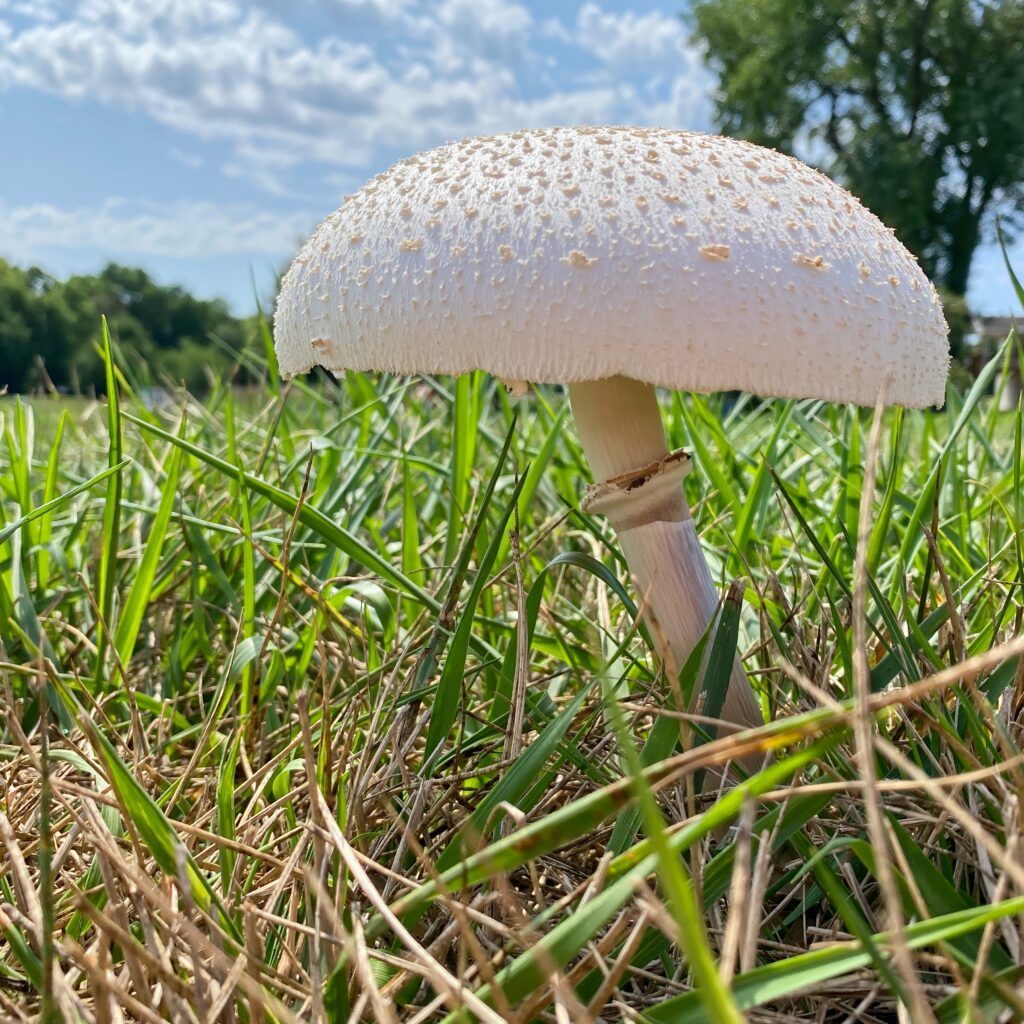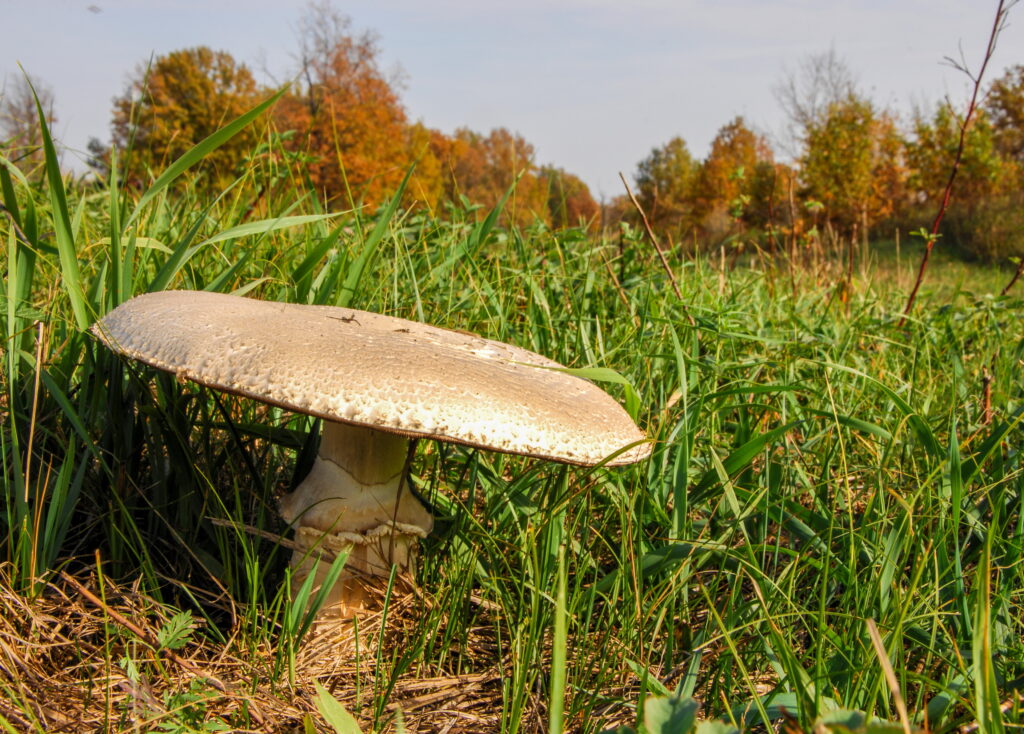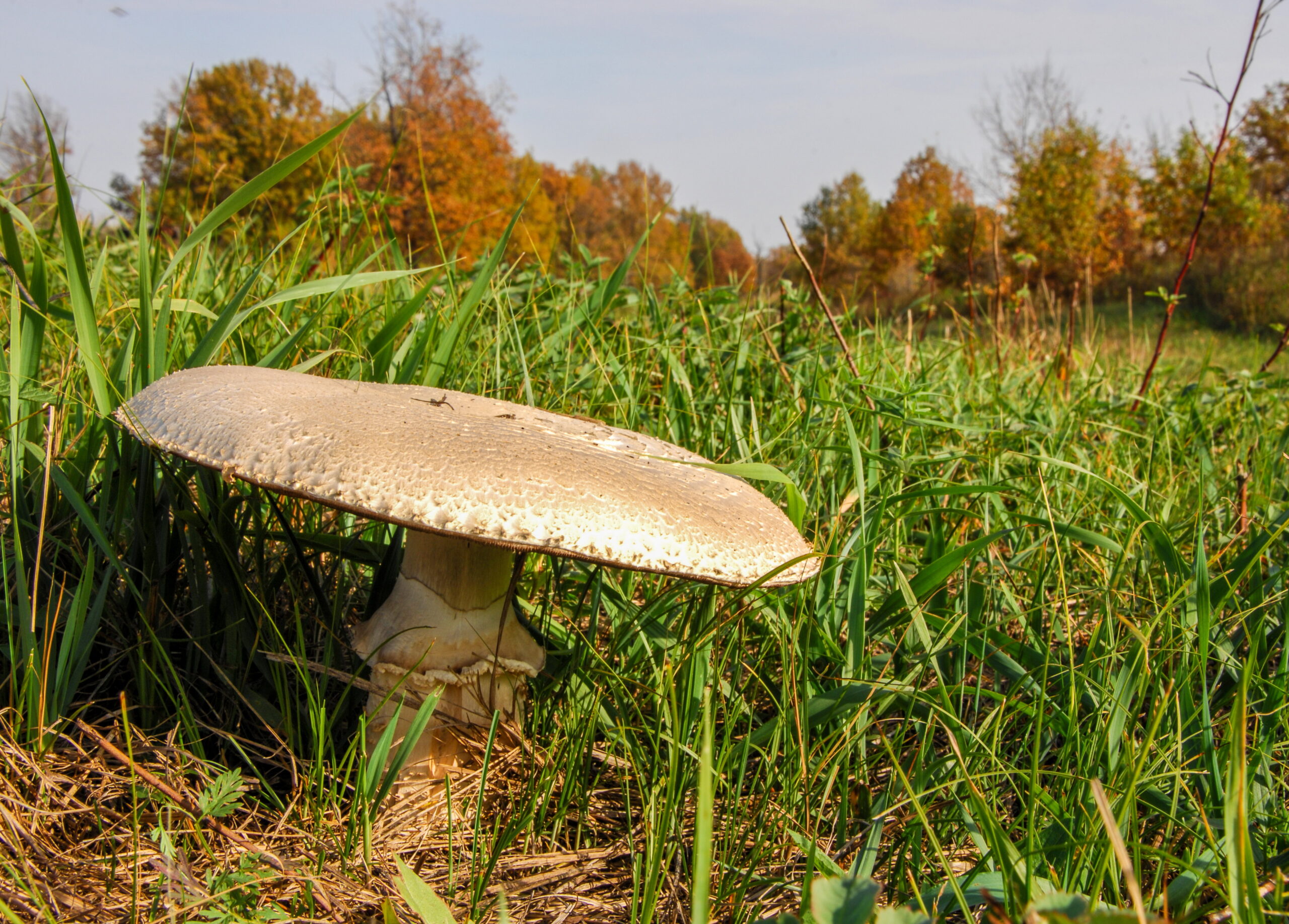Some of the links on this page are affiliate links, which means that Buzzy Kitchen earns commission from purchases made – at absolutely no extra cost to you. Thank you so much for supporting Buzzy Kitchen!
Horse mushrooms, also known by the scientific name Agaricus arvensis, are a fairly common, medium-to-large sized mushroom that can be found in UK meadows, parks and pastures. But are horse mushrooms edible? And if they are, what do they taste like?
Why don’t we find out?
Are Horse Mushrooms Edible?
Yes, horse mushrooms are edible.
In fact, some connoisseurs call the horse mushroom the “most delicious of all edible fungi”, and have recommended them as a great, wild substitute for portabella mushrooms.
Honest Food has a great horse mushroom recipe, created for wild mushrooms – specifically horse mushrooms, button mushrooms, or meadow mushrooms.
It’s super simple to whip up, makes for a great side, and contains only 100 calories per serving!
What Do Horse Mushrooms Taste Like?
Horse mushrooms are said to taste as they smell: like aniseed.
It isn’t an overpowering, overbearing aniseed taste, but it is there. If you don’t like the flavour or smell of aniseed, there’s a chance you might not like the flavour and smell of horse mushrooms.
Most mushrooms have a relatively neutral, plain taste, and are easily infused with other flavours. This is what makes them a great substitute for a wide range of ingredients, including meat.

What Do Horse Mushrooms Smell Like?
Horse mushrooms smell similar to aniseed.
It’s a muted and subtle scent, but you can definitely smell it. It is one of the factors to take into consideration when trying to identify horse mushrooms.
Does it smell like aniseed?
Yes – it might be a horse mushroom.
No – it might be a toxic horse mushroom lookalike.
Are Horse Mushrooms Psychedelic?
No, horse mushrooms are not psychedelic.
Despite often seen growing in fairy rings, there is nothing magic about horse mushrooms.
Are Horse Mushrooms Poisonous?
No, horse mushrooms are not poisonous.
You are very unlikely to suffer from any negative side effects as a result of eating them, providing you have properly identified the mushroom type, and the mushroom is properly prepared and cooked before eating.
Potentially Poisonous Horse Mushroom Lookalikes:
There are poisonous or toxic mushrooms that look very similar to horse mushrooms, such as the yellow stainer mushroom. Because of this, you should proceed with caution and be 100% sure of your mushroom’s identity before cooking or eating.
Horse Mushrooms & Heavy Metals:
Horse mushrooms are known to absorb heavy metals easier than other plants and mushrooms. Because of this, you should be careful when foraging and picking horse mushrooms that have grown by the sides of heavy roads.
There is a chance that roadside horse mushrooms could carry a build-up of copper, cadmium, and other metals, which are dangerous to consume. It is recommended to limit your consumption of roadside horse mushrooms.
Pasture, meadow or field-borne mushrooms are safer to eat, providing they aren’t close to a busy road.

How to Identify Horse Mushrooms
Horse mushrooms are quite wide and large, with caps (or heads) that are up to 25cm or just under 10 inches across.
One of the largest mushrooms within the Agaricus family, it can look short and stubby, with a stalk that maxes out at about 10cm or just under 4 inches.
Generally, they are white, but they can turn a golden/yellow shade when they get bruised and bashed up. This happens more when the mushroom is young. Older horse mushrooms turn a darker shade, more nude-beige-brown, especially when bruised.
Horse mushrooms can also appear nude-brown in shade, or almost grey, and the underneath is usually brown, varying between shades of caramel, nude and chocolate-brown. Younger horse mushrooms have a pink underside. (These are known as gills.) They turn darker and more brown as the mushroom ages.
The underside of a horse mushroom is never white. If it is, it is not recommended to eat it or pick it.
At first glance, it would be easy to confuse horse mushrooms with other mushrooms, such as closed cup, button mushrooms, or yellow stainer mushrooms.
When is Horse Mushroom Season UK?
Horse mushrooms can be found all-year-long in the UK, but they are more prolific and easier to find during late summer and autumn.
Horse mushroom season in the UK starts in May and continues until October/November.
Where Do Horse Mushrooms Grow UK?
Horse mushrooms can be quite prolific across the UK. They are often found growing in fairy-like rings, along the verges on the sides of roads, public paths and gardens, large back gardens, meadows, pastures, and other open grassy areas.
They seem to have a preference for areas around horse stables, areas with spruce trees, and in the same rich soil as stinging nettles.
Why Are Horse Mushrooms Called Horse Mushrooms?
Horse mushrooms, also known as Agaricus arvensis, were given the name because of their propensity to grow in horse pastures and other fields that had been fertilised by horse manure — the manure being the key ingredient.
